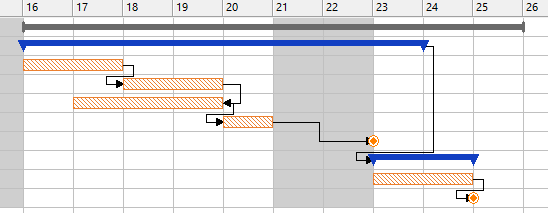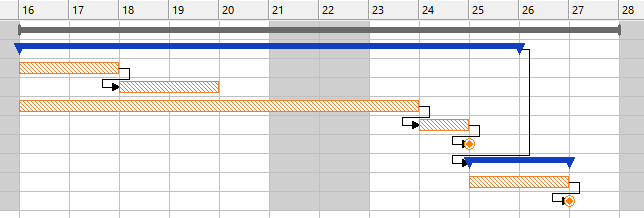
Two project components with a finish-to-finish relationship must end at the same time. In the example below, the third activity must end at the same time as the second. As the third activity has a longer lead time than the second, the start date of the third activity is set before the start date of the second activity:

If the third task has such a long lead time that the entire project should start earlier in order to make sure that the tasks end at the same time, the planning is adjusted as follows:

If the project start date were fixed at the 16th, a conflict would arise. More time is needed, but both the task start date and the task end date are fixed. A bottleneck like this cannot be solved automatically. To solve this, you might want to consider options such as deploying more capacity, making overtime, or moving the deadline, all of which may have different results, depending on the situation.
In Isah the finish-to-finish relationship is more important than the project start date. This means that you may well get the same result as in the image above. To obtain a different result, you could choose to remove the finish-to-finish relationship, for instance. The operation creating the problem will now start on the earliest possible date:
